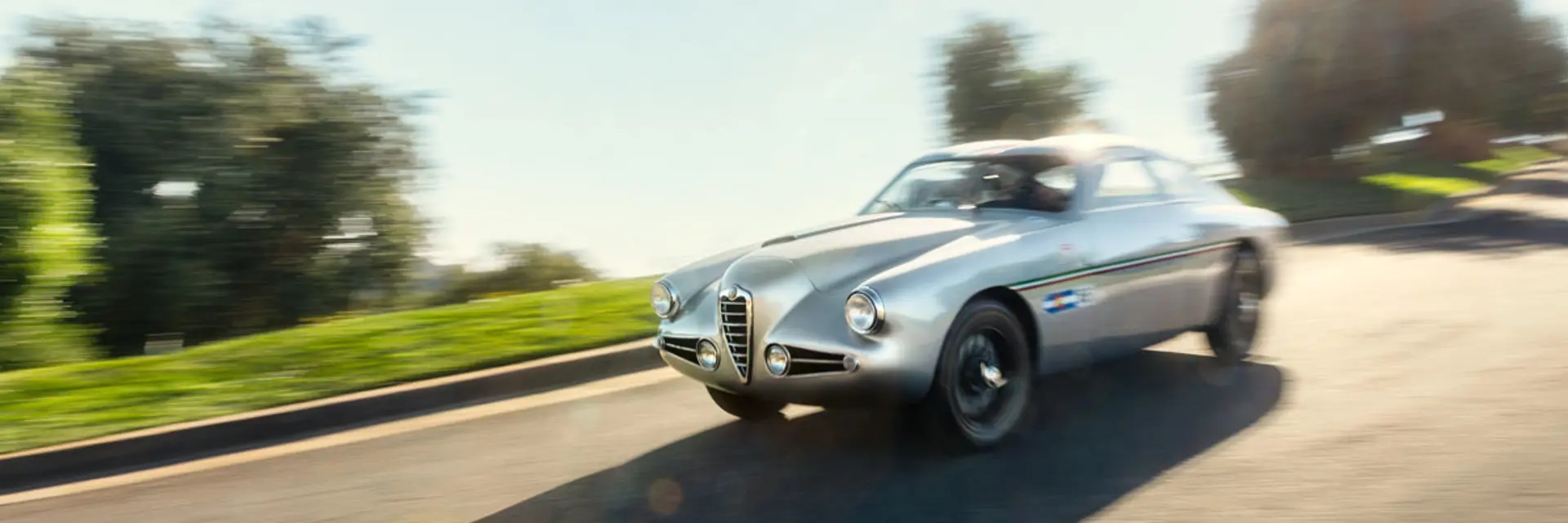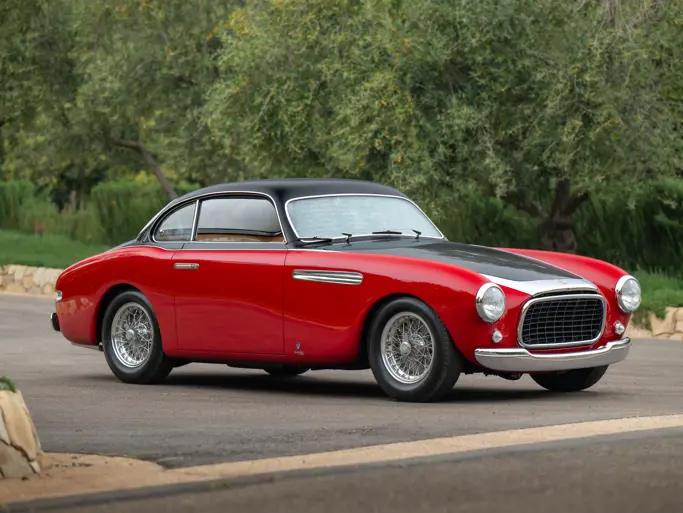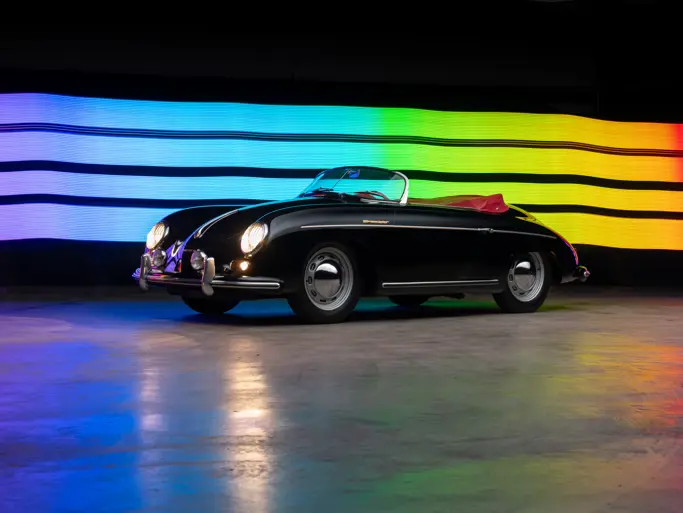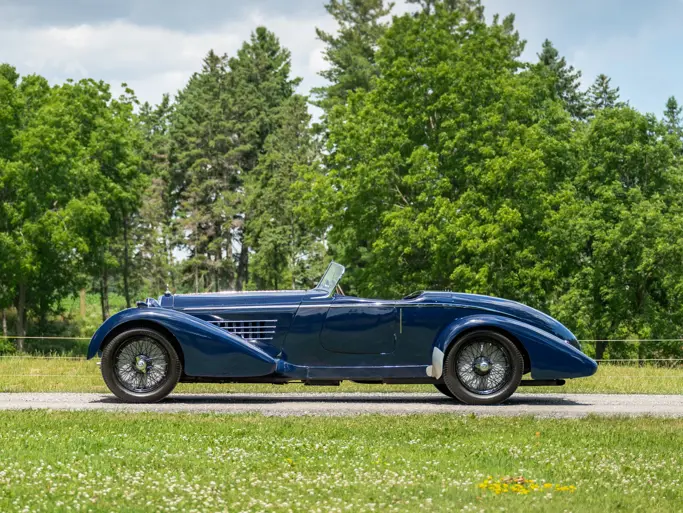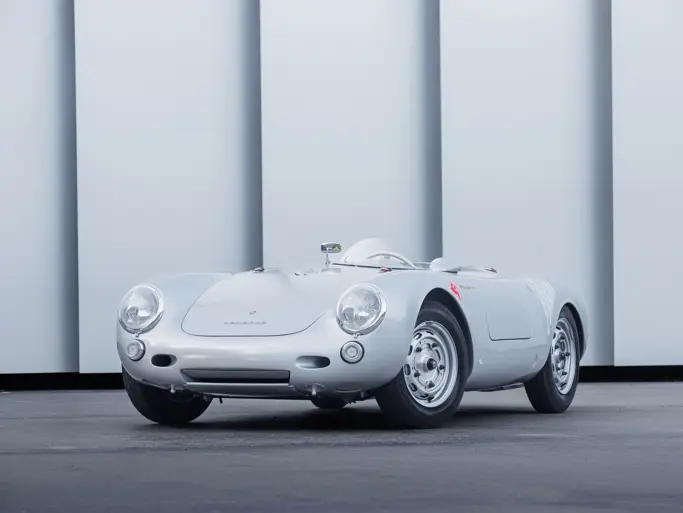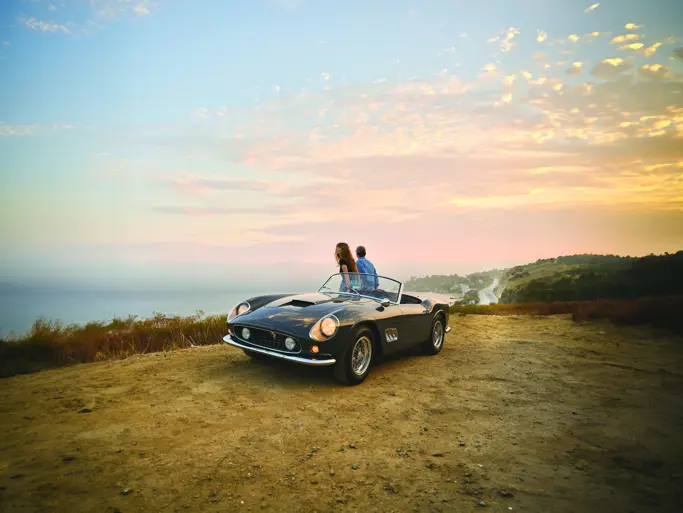From daring pilots of pre-war Alfa Romeo 8Cs to the brilliance of Stirling Moss and the Mercedes-Benz 300 SLR, the Mille Miglia has provided some of the most exciting and heroic drives in the history of motorsport. Going from Brescia to Rome and back again, the 1,000-mile Italian epic was special for being run on public roads, with professional drivers and their tuned race machines weaving through rush hour traffic, blasting through crowded piazzas, and pushing to the limits on twisting, unknown roads in their desperate efforts to get ahead. It was a race fraught with danger, where the public crowded the streets and rocks lined the unpredictable mountain roads. To win the Mille Miglia was a badge of honor—a ringing endorsement not just of driving talent but of bravery and nerve.
The race only got more perilous as cars became quicker, and from 1953 until the final running in 1957 it served as a round of the World Sportscar Championship; it was during this period that Stirling Moss and Denis Jenkinson set a record that would never be beaten, finishing the 992-mile race at an average speed of more than 97 mph. Tragedy eventually put an end to the race, which ran its final competitive event in 1957. But it would be revived, and from 1977 was reborn as a regularity rally: the Mille Miglia Storica. It remains one of the most exciting and exhilarating historic events on the calendar and is still run on public roads with a huge following from passionate spectators.
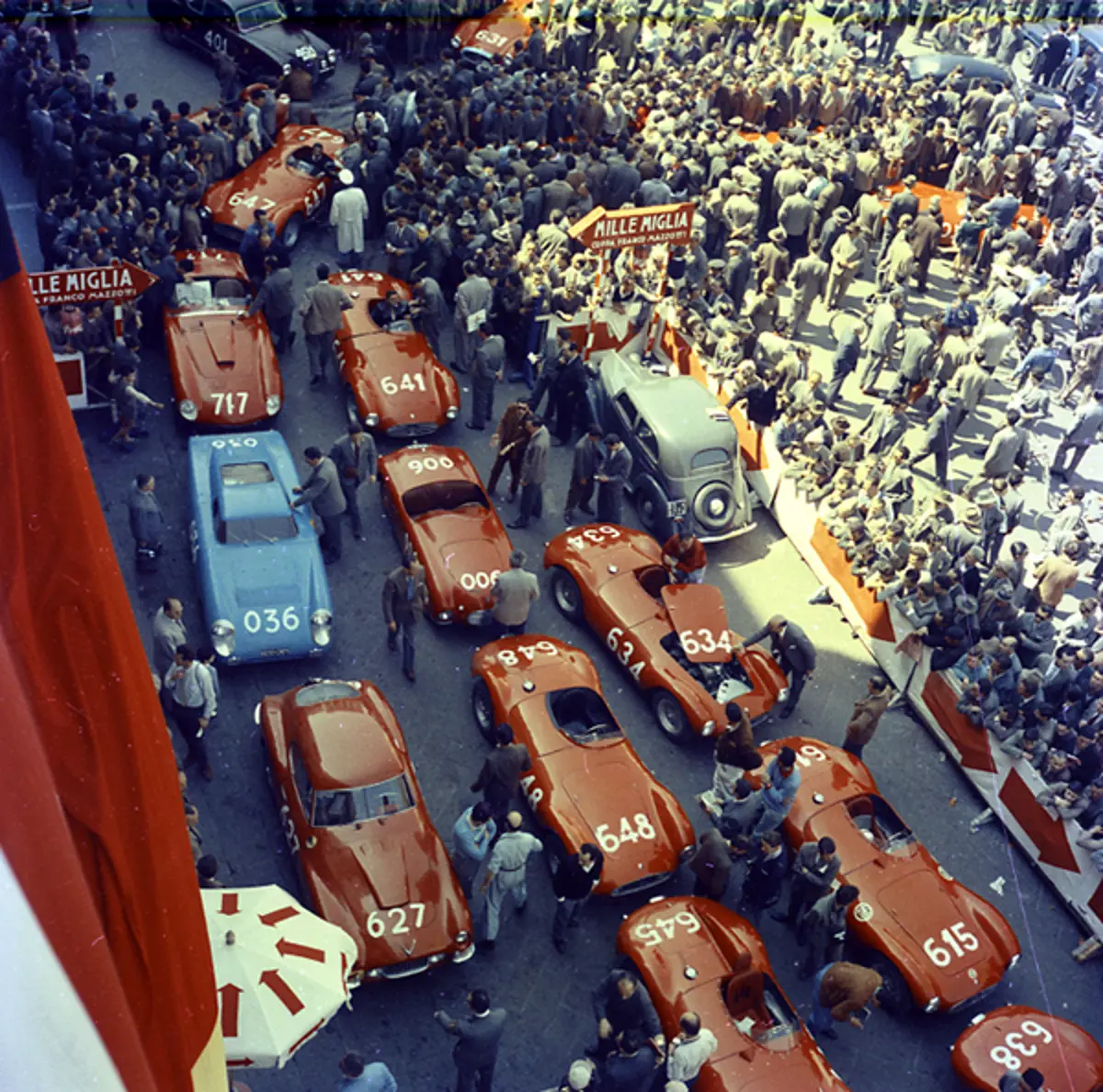
If you want to take part in the greatest race on earth, the first thing you’ll need is a car. Regulations stipulate that you must enter a car of the same age and type as one that took part in the original event between 1927 and 1957. Competition for places is so fierce that each applicant is graded, with older cars preferred over younger, and extra weight given to models that won their class or the race overall. Those prized highest of all are the handful that took victory in the famous event.
This year’s Monterey auction could help you take your first steps towards Mille Miglia Storica glory: the sale contains no fewer than nine machines that meet the eligibility requirements of the event. Check out the cars below, and picture which you would like to drive through Brescia’s Piazza Vittoria.
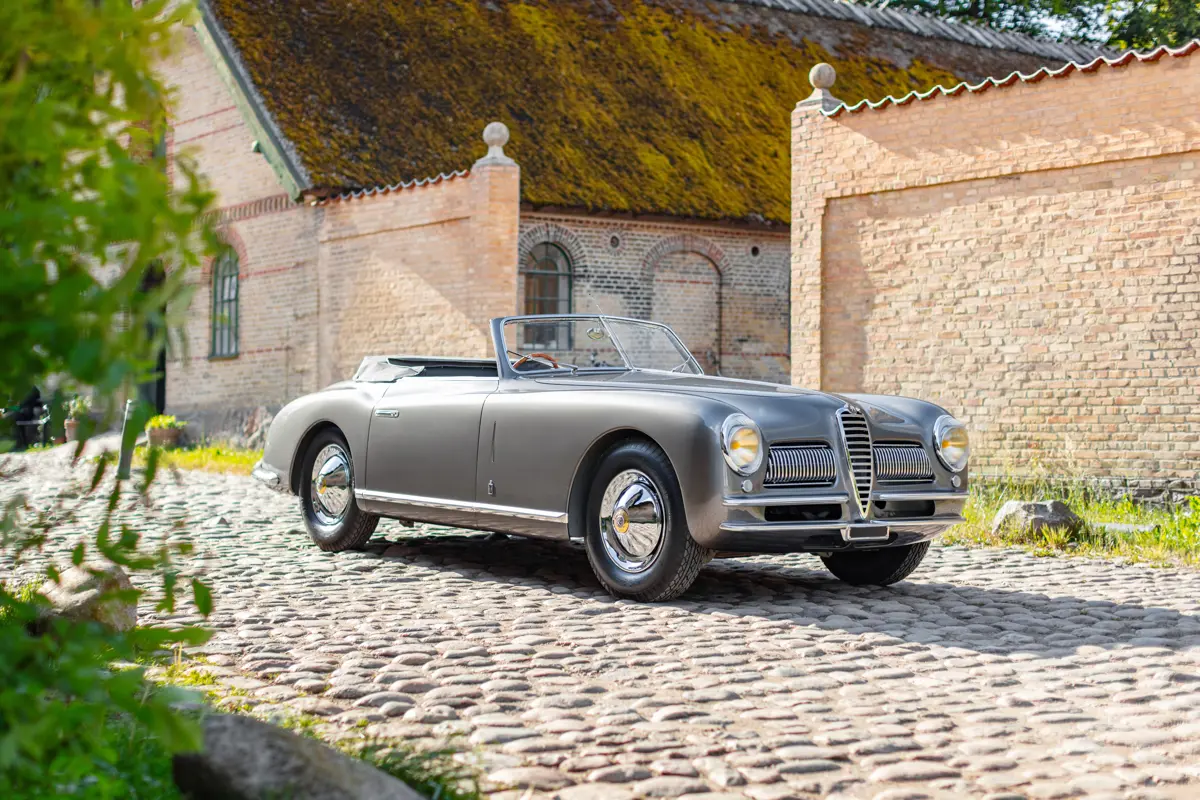
1949 Alfa Romeo 6C 2500 Super Sport Cabriolet by Pinin Farina
The Mille Miglia was historically dominated by the great Italian car makers, and Alfa Romeo was more successful than most—particularly during the early years—with its cars winning the race outright on no fewer than 11 occasions. Much of that success came in the pre-war era, but the firm played a part in the post-war period too, most notably with an overall victory in 1947 with its 8C 2900 B Berlinetta by Touring. The elegant 6C 2500 Super Sport Cabriolet by Pinin Farina also played its part, contesting the 1949 race that was eventually won by the Ferrari 166 MM of Clemente Biondetti and Giuseppe Navone.

If you want to take on the race in style, you could do much worse than this stunning 1949 Alfa Romeo 6C 2500 Super Sport Cabriolet, which features slightly altered coachwork believed to have been fitted to just a handful of cars. This particular car was first delivered to Count Goffredo “Freddie” Zehender of Milan, a talented driver who joined the Alfa Romeo Works team in 1929 and contested the 24 Hours of Le Mans three times. He was a stalwart of Italian motorsport, managing the Gruppo Inter race team—one of the first privateer outfits to campaign Ferrari sports cars. In 1948—the same year Gruppo Inter was established—Zehender crashed a Ferrari 166 Spyder Corsa in practice for the Mille Miglia, forcing team founder Prince Igor Troubetzkoy to take on the race in a spare Allemano-bodied 166 S Coupe. While the pure competition cars struggled with poor quality fuel, Troubetzkoy’s road car soldiered on, eventually taking a famous victory. Zehender returned to the event in 1953, contesting the 20th Mille Miglia in an Alfa Romeo 1900 Corto Gara—a fascinating link to the great race that would no doubt help this car’s cause.
Just three years after taking delivery, the Alfa Romeo was shipped to the United States where it remained until 2013. It was then subject to an extensive and high-quality restoration that ultimately led to it being accepted to the Pebble Beach Concours d’Elegance—an event that was sadly canceled due to the global pandemic. Whether or not this car ever takes on the fabled Mille Miglia, its next owner will have the pleasure of a much-anticipated concours debut.
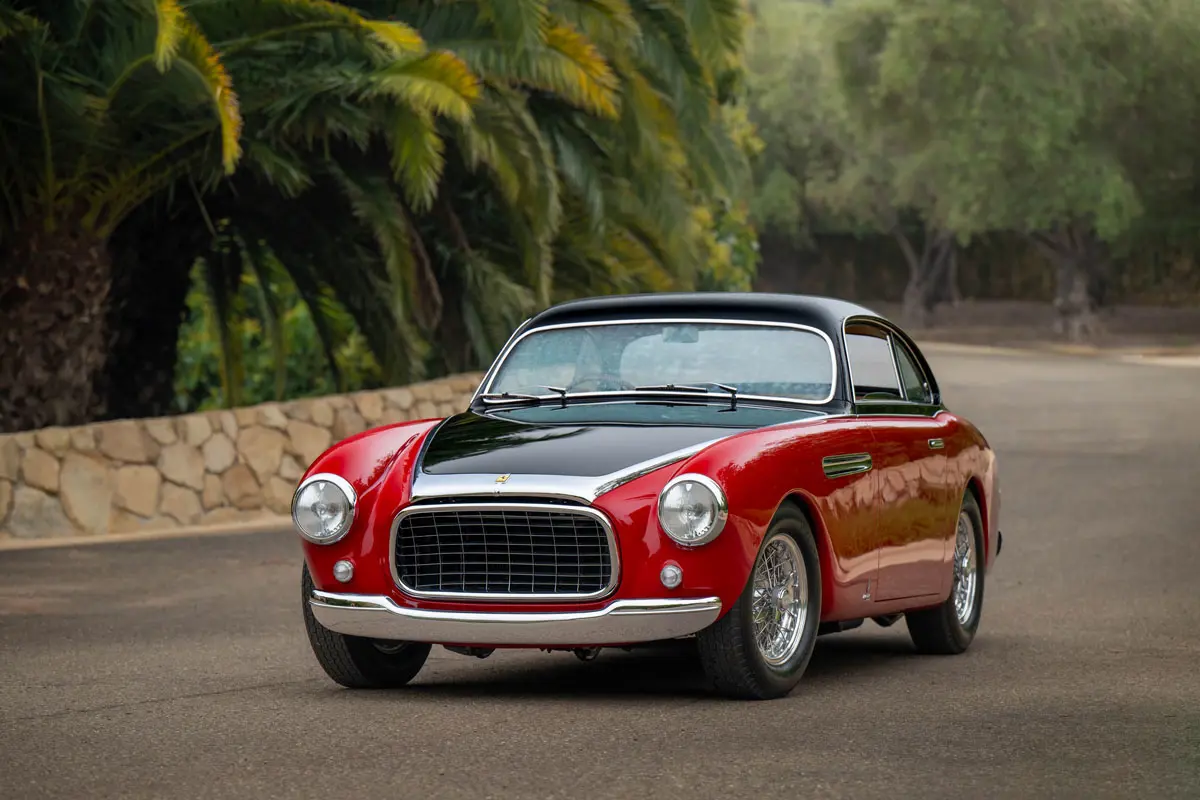
1951 Ferrari 212 Inter Coupé by Vignale
Alfa Romeo may have dominated the early years of the Mille Miglia, but as Europe recovered from the ravages of war it was Ferrari that came to the fore. Beginning with Prince Troubetzkoy’s spectacular win in 1948, Enzo Ferrari’s machines won the race for six consecutive years, eventually taking the tally to eight wins by the time the event was shelved. Those early successes are owed to the 166, and it was that platform that by the early 1950s had evolved into the 212.
The Ferrari 212 Inter Coupé by Vignale may not have won the Mille Miglia, but it did prove to be a hugely successful sports car. In 1951, Piero Taruffi and Luigi Chinetti, and Alberto Ascari and Luigi Villoresi, won the Carrera Panamericana—arguably a more punishing event than the Mille Miglia itself. The 1-2 finish in Mexico underscored not only the Ferrari’s performance, but also its reliability.
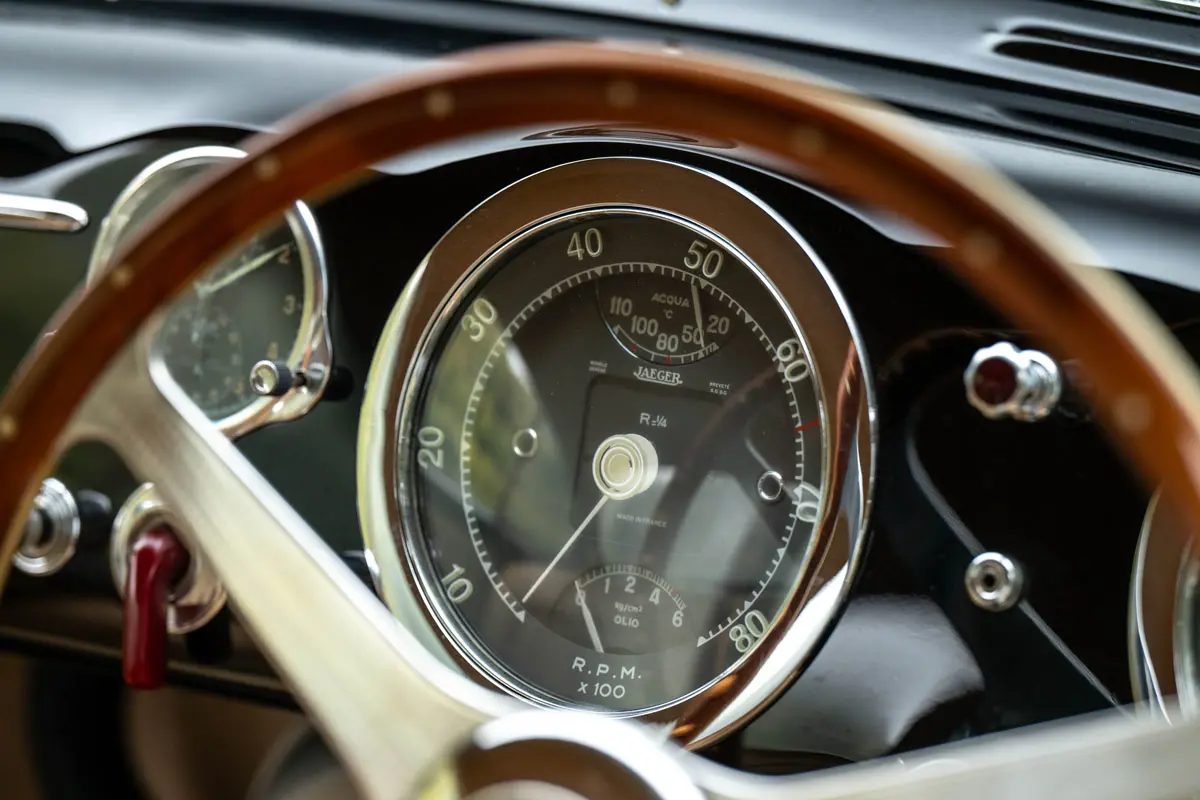
This Ferrari 212 Inter left the Maranello factory in June 1951, just a few short weeks after that year’s Mille Miglia. Rather than being destined for competition, the spectacular Vignale-bodied coupe was made for France, where it played a starring role at the Paris Motor Show. It was then sold to Franco Cornacchia, an occasional racer and one of Ferrari’s very first dealers, before being sold to a fellow resident of Milan. However, the car’s turn in the spotlight wasn’t over—by the following year it had taken pride of place on the February 1952 issue of Road & Track, making the car something of a celebrity in the States.
The Mille Miglia is a special race that means a lot to the Italian people, but they reserve a special fervor for the cars of Ferrari. This 212 Inter would be assured of a warm reception along the route, while the closed roof, comfortable cabin, and punchy 2.6-litre Colombo V-12 would make it a fantastic place to spend 1,000 miles.

1954 Ferrari 500 Mondial Spider by Pinin Farina
Gaining entry to the Mille Miglia Storica is notoriously difficult, but there are ways of greatly improving your chances. Namely, acquiring a car of a type that has run the event before. This 1954 Ferrari 500 Mondial can go one better than that, having contested the 1954 Mille Miglia just weeks after leaving Maranello. The car was completed on 23 March and was almost immediately shipped to Brescia for the start of the race, where it wore #459 and was driven by Paolo Pineschi and Mirko Landini. The pair finished in 74th position overall and 18th in class, while its sister cars finished 14th and 15th with the Scaglietti-bodied 500 Mondial of Vittorio and Marzotto coming home in 2nd place.

Almost straight after the race, the 500 Mondial was sold to Scandinavia, where it was campaigned extensively in Finland and Sweden. By 1973 the car had made its way to the United States, and just a few short years later it would continue its Mille Miglia legacy, taking part in the very first Mille Miglia Storica in 1977. It would go on to participate in the event a further seven times between 1982 and 1991, surely improving its chances of making a return to Italy.
Better still, the car has since been restored with all-new aluminum coachwork by Carrozzeria Bacchelli & Villa of Bastiglia, Modena and an uprated 3-litre engine by UK specialist Hall & Hall (don’t worry, it also comes with its original 2-litre unit freshly rebuilt by Patrick Ottis). Now more potent and correct than at any other point during its Mille Miglia Storica career, the car is primed for a triumphant return to an event so ingrained in its history, as well as being the perfect tool for any number of comparable tours and rallies.

1954 Porsche 356 1500 Speedster by Reutter
Throughout the 1950s, the Mille Miglia was dominated by V-12 Ferraris, but in the classes that catered for smaller-capacity cars, it was all to play for. One of the most popular choices in the sub-1,500-cc categories was the Porsche 356, and between 1954 and the final event in 1957, an incredible 57 356s of various flavors contested the great race. Lightweight and powerful, with predictable handling and reliable air-cooled engines, the Porsche 356 was perfectly suited to the long-distance enduro. The same holds true today, and if you want to get back to Brescia in style, there are few better options than a Porsche.

Of all the varieties of 356 to take part in the Mille Miglia, the 356 1500 Speedster makes arguably the most compelling case for the modern event. It’s 1.5-litre air-cooled flat-four may not be the most powerful in the range, but it’s a rugged and reliable lump with far less to go wrong than the racier four-cam Carrera unit—perfect for long days behind the wheel and simple enough to fettle should finding your support car prove a challenge. The Speedster also has a lot more cachet than its tin-topped siblings, and though closed versions are undoubtedly more comfortable, if you want to soak up the atmosphere in the towns along the route and interact with fans then an open car is a must. Finally, the 356 1500 Speedster has an advantage over some of the other models in that it scored a class win, which provides a useful winner factor that increases your chance of securing a place.
This early example is among the first 200 cars built for export to the United States and benefits from a matching-numbers engine and gearbox, as well as Marchal driving lamps perfect for the Mille Miglia’s nighttime sections.

1954 Mercedes-Benz 300 SL Gullwing
There are few more striking or glamourous automobiles than the Mercedes-Benz 300 SL Gullwing. With its swooping lines, straked wheelarches and outrageous doors, it looked like nothing else that had come before—at least to those who didn’t have a feverish interest in international sports car racing. The car quickly became a favourite of the rich and famous, particularly in the United States, but beneath those space-age movie star looks lay a machine with its roots firmly on the racetrack, with its W194 Works forebear bringing Mercedes-Benz success everywhere from the 24 Hours of Le Mans to the Carrera Panamericana.
Though born for the road, the Gullwing quickly found its feet in competition. Werner Engel won the 1955 European Rally Championship in a 300 SL, and while Stirling Moss famously won the Mille Miglia behind the wheel of an SLR, John Fitch topped his class in a production coupe. The production car would prove its mettle again in the 1955 Liege-Rome-Liege and would come to dominate Class D of the SCCA Championship between 1955 and 1957.

Fitch’s pioneering foray in the 1955 Mille Miglia ensured the model’s eligibility for the modern event, and there are few cars better suited to the long-distance enduro. With its sophisticated suspension, powerful fuel-injected straight-six engine, and comfortable cabin, the Gullwing feels more like a fighter plane than a car—perfectly suited to dogfighting with modern traffic during the Mille Miglia Storica.
This magnificent 300 SL Gullwing is a wonderful example for those who appreciate originality. In addition to matching-numbers chassis, body, engine, gearbox, front axles, rear axle and steering box, it boasts its correct White over Red colour scheme. Better than that, this is a car with incredible patina, giving it an air of authenticity that would pair perfectly with the famous Italian race.
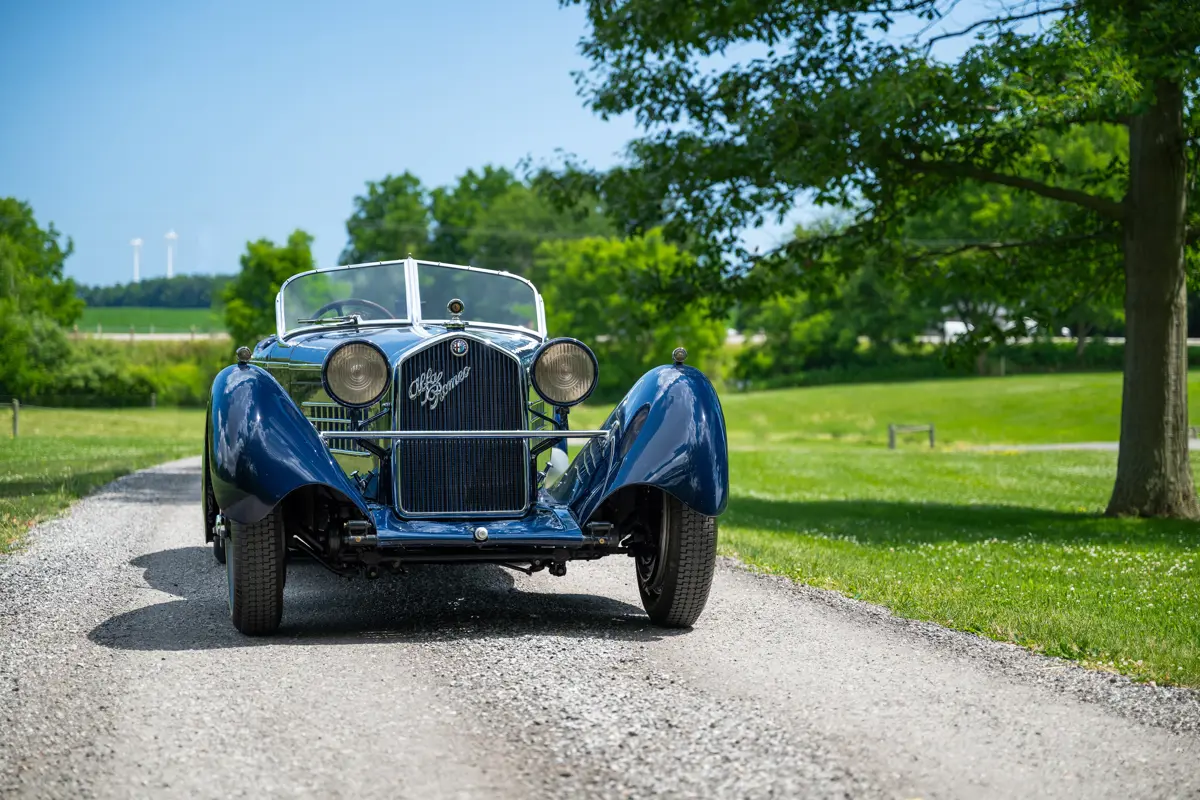
1934 Alfa Romeo 8C 2300 Lungo Spider
When it comes to the Mille Miglia, Alfa Romeo’s legendary 8C is nothing short of royalty. Road and race variants of the car, so named for Vittorio Jano’s spectacular eight-cylinder engine, won the event seven times between 1932 and 1947—nine times if you count the monoposto Tipo B P3—writing the model’s name in the annals of motorsport history. Alfa Romeo’s legendary model is as synonymous with the famous race as it’s possible to be, and there’s truly no better way to experience the thrill and excitement of the modern-day event than behind the wheel of one of these magnificent creations.
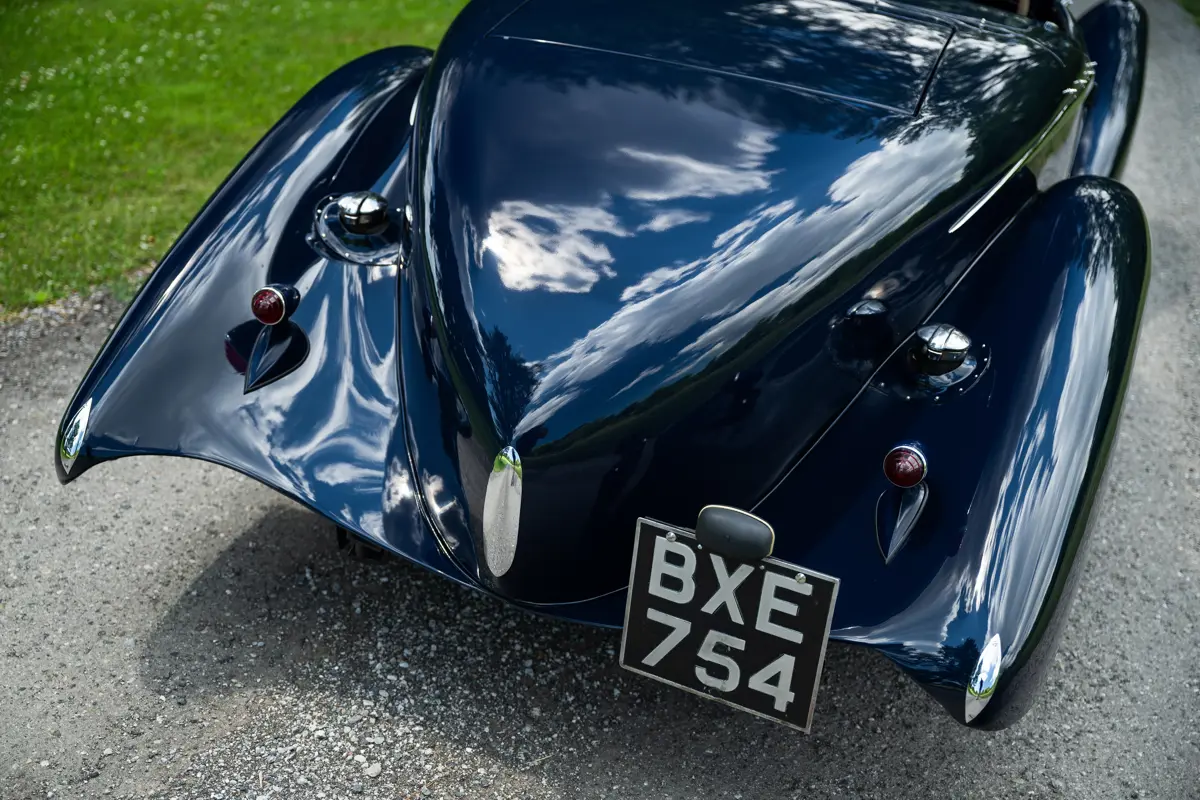
This example is arguably more magnificent than most. It left the factory in August 1934 fitted with a long chassis and cabriolet body by Castagna before being acquired by Bentley concessionaire, Jack Barclay, and shipped to London. There, it was fitted with a spectacular two-seat alloy body unlike anything else, with supremely elegant proportions and an eye-catching boat-tail rear end. Registered in the Jack Barclay name on 3 April 1935, it was sold to racing drive Roy Gibson just a week later. The car was eventually bought by renowned author and Alfa authority, Angela Cherrett, and remained in her care for almost half a decade.
Highly original and totally unique, this special Alfa Romeo almost feels destined for a starting place in the Mille Miglia Storica and would surely rank among the most striking and beautiful machines to take on the event. And with its open-top, sporting chassis, and supercharged straight-eight engine, driving it through the cobbled streets and charming piazzas of the towns along the route would be simply unforgettable.
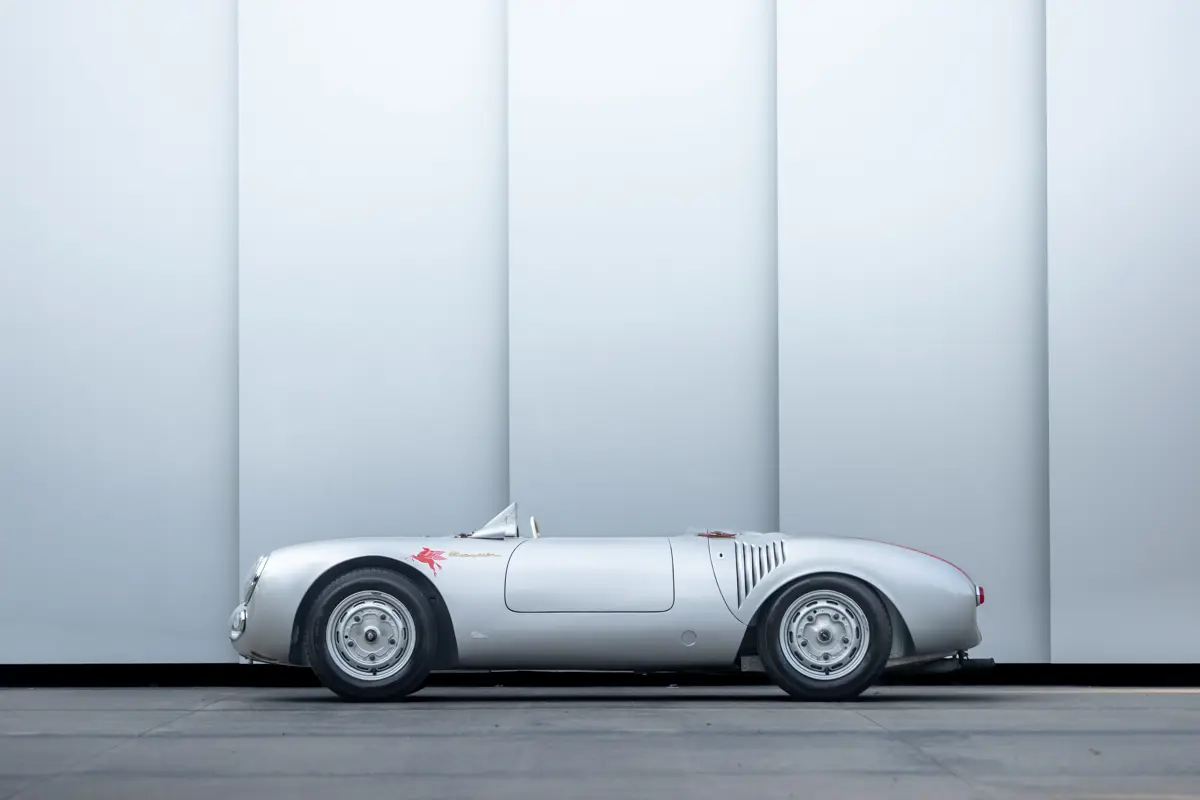
1955 Porsche 550 Spyder
There are plenty of comfortable grand tourers on this list, each of which would be an absolute pleasure to drive on the 1,000-mile route from Brescia to Rome and back—but for an authentic, visceral driving experience, it’s hard to look beyond this stunning 1955 Porsche 550 Spyder. Just 90 of these incredible machines were built, and the model proved something of a giant killer. Its lightweight construction and powerful four-cam Carrera engine made it one of the nimblest sports cars in competition, perfectly suited not only to the winding Italian roads of the Mille Miglia, but also the Targa Florio and Carrera Panamericana, where it punched well above its weight. It was so low to the ground that Hans Hermann famously drove one under a barrier during the Mille Miglia.
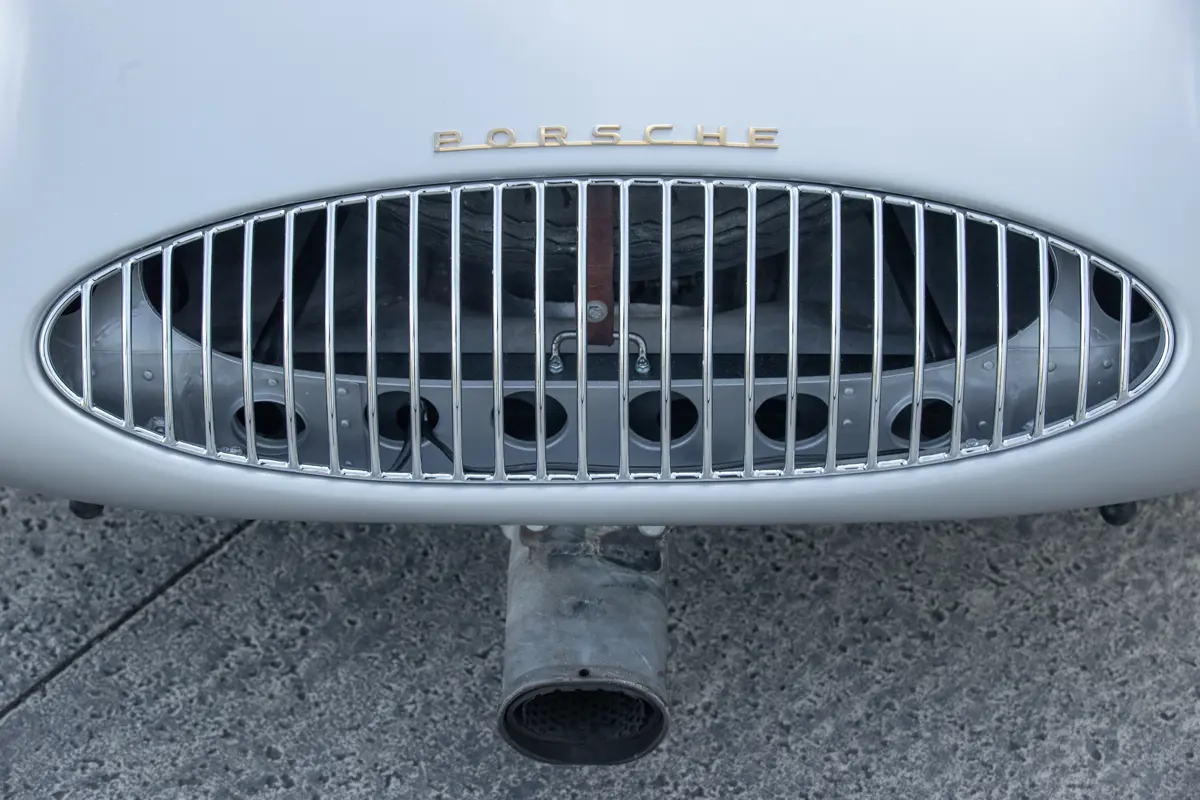
A big part of the 550 Spyder’s appeal is its cultural impact, and it owes that more to Southern California than the Nürburgring. Like the 356 Speedster, it proved hugely popular in the US race scene, and became forever a part of the public consciousness when Hollywood star James Dean lost his life in one. This particular 550 Spyder is indelibly linked to that special period of California history, having been delivered new to famed Porsche importer John von Neumann, and it became a regular at events across the state. It was campaigned throughout 1956 by Richie Ginther and was also raced by Ken Miles, who would go on to become a major contributor to the Shelby 289 Cobra, Daytona, and Ford GT40.
A handful of Porsche 550 Spyders usually take part in the Mille Miglia Storica, but if you want to stand out even among such exalted company, then this is the car in which to do it. The penultimate example built, it boasts a number of unique features specified by von Neumann, including a large oval grille at the rear of the engine and a handful of extra vents and louvres to keep the Fuhrmann four-cam cool.
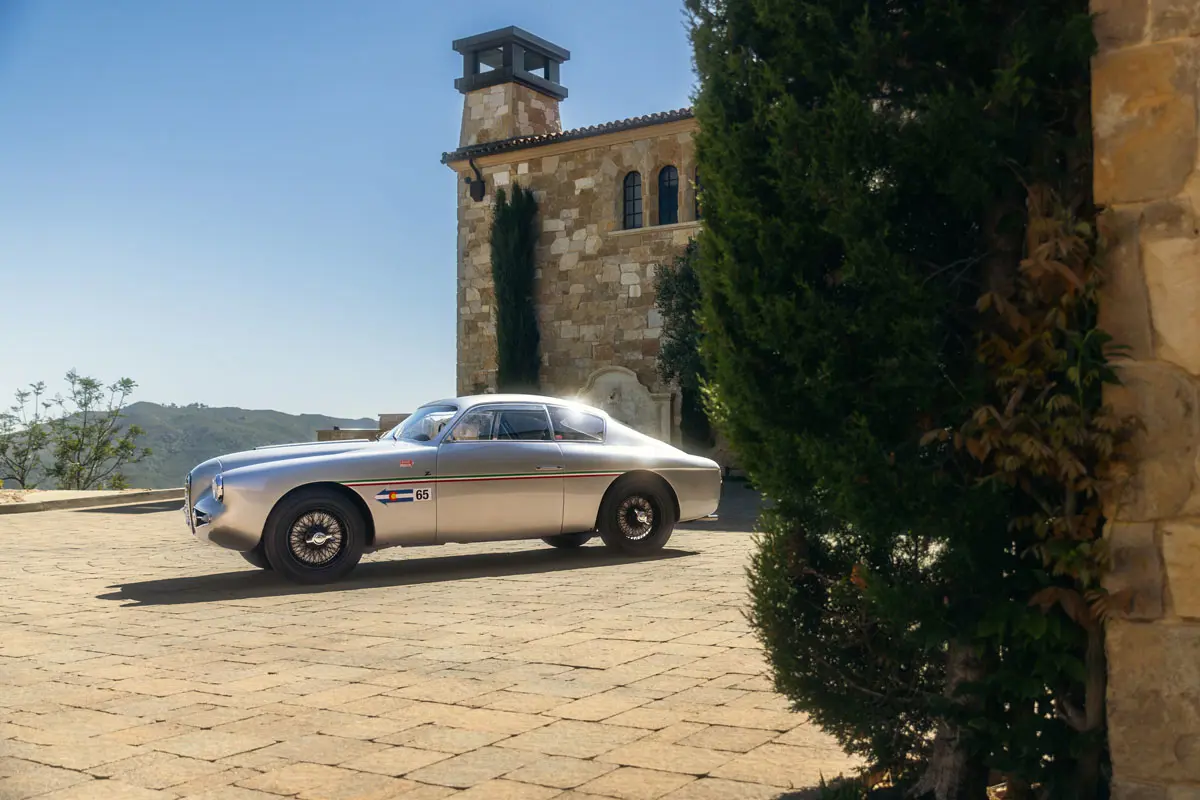
1955 Alfa Romeo 1900C SS Berlinetta by Zagato
More than any other Italian coachbuilder, Zagato made its name bodying competition cars, with an emphasis on weight saving that gave its machines a vital edge against their rivals. It also has a long association with the Mille Miglia, having clothed a trio of Alfa Romeo 6Cs that took back-to-back victories in 1928, 1929, and 1930, as well as an Alfa Romeo 8C 2300 Spider that took the overall win in 1933 thanks to Tazio Nuvolari.
The firm continued its sporting tradition in the post-war era, and as early as 1954 had transformed Alfa Romeo’s short-wheelbase 1900C platform into a lightweight and aerodynamic masterpiece—the 1900C Super Sprint Zagato. Only 39 examples were built, six of which challenged for honours at the 1955 Mille Miglia.

This stunning example was one of those machines, being the 23rd to leave the factory and the second to be delivered in 1955. Within months of being acquired by its first owner, Dr Vincenzo Fornasari, his son, Luigi, had entered the car in the Mille Miglia. He finished a creditable 38th overall and 11th in class and continued to campaign the car with a string of impressive results.
In later life the car travelled to America and was raced at the Monterey Historics during the 1970s, and in 1987 it returned to Italy to take on the Mille Miglia Storica. More recently, the Zagato enjoyed $129,000 of mechanical freshening including an engine rebuild, and in 2023 it took part in the Colorado Grand, proving its readiness for long-distance touring. With its period Mille Miglia history, not to mention its recent fettling, this pretty Alfa would no doubt relish a return to its roots.

1957 Ferrari 250 GT Coupé by Boano
Around a dozen different variants of Ferrari’s 250 platform participated in the Mille Miglia between 1950 and 1957 delivering a class win and an outright victory in 1952, so you’re spoiled for choice when it comes to choosing an eligible car. We would make a case for one of the most affordable and elegant, the 250 GT Coupé bodied by Carrozzeria Boano. Boano took over production from Pinin Farina, who couldn’t meet demand, and ultimately produced 74 cars, each featuring a stylish lower wing design and low roof—at least compared with the Ellena-bodied cars that would follow.
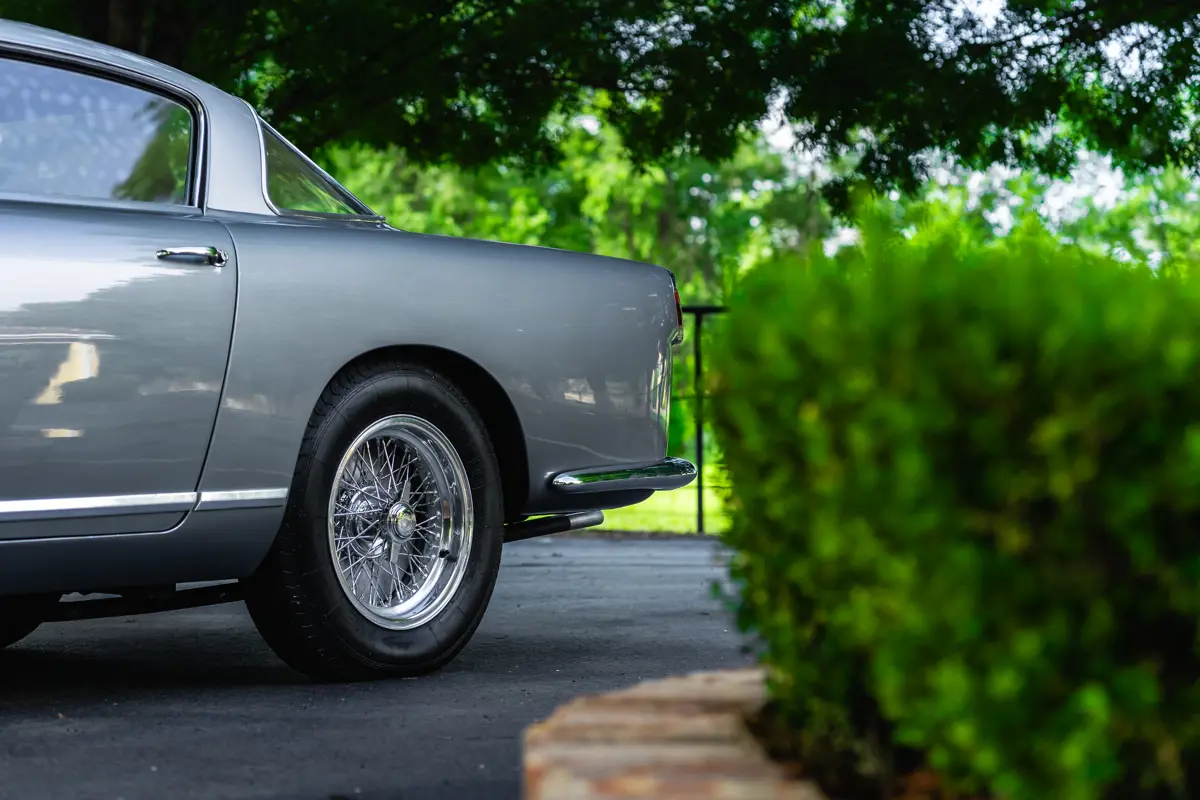
Beautifully proportioned and powerful thanks to Ferrari’s stellar 3-litre Colombo V-12, Boano Coupés were raced everywhere from the Tour de France to the Rallye Monte-Carlo, with Sergio Der Stepanian campaigning a car in the 1957 Mille Miglia. This particular example didn’t race and was instead destined for a more sedate life with Milanese publishing magnate Giorgio Mondadori. The car eventually made its way to the United Kingdom in the 1960s and spent many years in the Lark Lane Motor Museum. In 2012 it was refinished in Argento Auteuil Metalizzato over a tan interior, and five years later its original engine was overhauled by Terry Hoyle.
The result is a truly usable example of one of the most handsome 250 variants. With a comparatively accessible price tag and eligibility not only for the Mille Miglia but also blue ribband events such as the Tour Auto, this beautiful Boano Coupé could be your ticket to some of the world’s best touring events.

